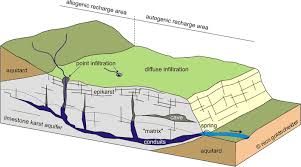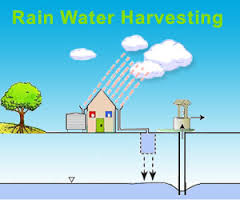Introduction
In the olden days, water used to be available in plenty with
rivers and other water bodies filled up to the brim. Hence, the water
availability in wells could be found not that deep. The scenario is slowly
changing. It has now worsened to such a level that water cannot be found even
after digging a number of feet down.
This change in water availability to water scarcity is going to create
rift between the water-surplus and water-scarce areas in our country. The
difference in water availability might even fuel unscrupulous exploitation of
water for commercial purpose. This is what happening in cities like Hyderabad
and Chennai where the water table is fast depleting and water replenishment is
happening less frequently. This might even create fights between water surplus
and water scarce areas in the near future. Hence, let us identify the reasons
and do the amendments to prevent the problems from going out of hands.
Factors Attributing to Water Scarcity
There are various factors that attribute to the scarcity of
water in a given locality. Some of them are man-made whereas some others naturally
exist. We cannot do anything on the natural ones. But we can take some
precautions to that effect so that things can be better managed. We have been celebrating
World Water Day instituted by the UN body. Yet, we have not properly understood
the meaning of the observation of that day. In this blog, we look at some of the
factors that contribute to the water scarcity.
- Climate Change: The major factor that contributes to the water woes facing a number of cities in our country is the change in the weather pattern. As a result, water from rains has come down.

- Deforestation: The plants and trees are necessary for the cooling of clouds and precipitation of water droplets. The humus created by the falling leaves around the trees and plants can retain water and prevent the loss of water. Despite this knowledge, we have been mercilessly downing the trees in the name of development. The forest and areas under agricultural cover are slowly giving rise to the high-rise building. So, water has no place to go.

- No Natural Faults: Even if it rains, the water is not getting stored anywhere unless and until there are natural faults under the ground to let the water percolate the rocks to reach the underground water table. Unfortunately, many cities in our country don’t have such naturally occurring faults to help the water reach the ground water storage underneath the ground.

- No Rainwater Harvesting: Some cities, especially Chennai, have made it a norm to give approval for the new buildings only when they include the provision for rainwater harvesting. Unfortunately, other cities in our country have never thought of this solution. This has lead to the loss of precious water after rains to the canals that are rarely maintained.

- Overexploitation: The water-scarce cities like Hyderabad and Chennai have given rise to a new form of business. This is called water tanker business. This business thrives heavily on the overexploitation of water resources from nearby villages. Over the period of a few months, the water table of the exploited area comes down drastically. However, the tanker water mafia would go in search of new avenues and continue their businesses.

- Uncontrolled and Unplanned Real Estate Growth: Due to uncontrolled growth in the construction businesses, the need for new wells has come into existence. If more wells are dug in the same locality, the water level in the existing wells goes down and they dry up quite easily during the summer season. This in turn has spurred the growth of tanker water businesses in many cities.

- Contamination of Existing Water Sources: Due to the rapid industrialization, the water table underneath the ground is slowly getting polluted, creating a demand for more water from other sources. In turn, this has given rise to the need for more wells elsewhere to keep up with the growing water demand.

- Other Forms of Exploitation: People tend to use precious water for cleaning their vehicles, watering plants and even washing the house. Doing these kind of activities take more water than what we think.









0 Post a Comment:
Post a Comment